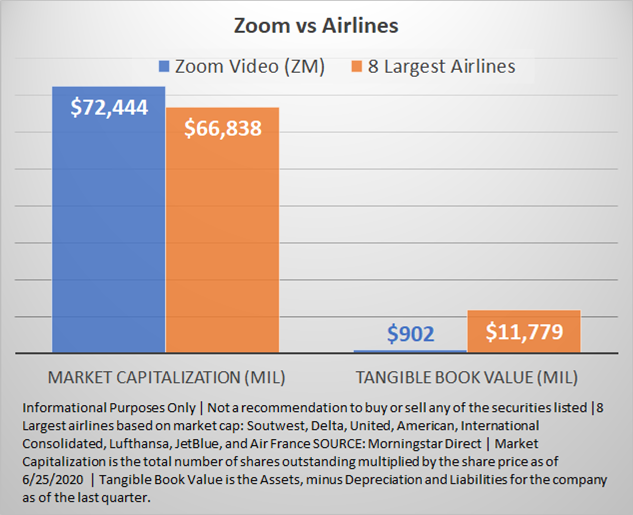
Dancing through a Minefield
In just three months the stock market switched from panic mode to full-fledged euphoria. For most of the quarter stocks have been going up 4, 5, or 6 days in a row, only to have a sudden large drop with little warning or explanation. Many investors have asked how stocks can ignore everything that is going on in the country. We don’t have the space to dive into that difficult question. Essentially investors are expecting a full comeback in the months and years ahead and therefore are looking past many things that can derail the economic recovery.

Just because the market is currently ignoring bad economic news does not mean it is not a problem. We like to say, “it doesn’t matter until it does.” Our data-driven approach is designed to focus only on the direction of the market, not the news of the day. With so many hot-button issues facing our country today on top of a massive economic slowdown, we won’t cover any of them specifically in this newsletter. A lot can change in three months. Rest assured we will be here everyday watching our trading systems and making adjustments to our allocations accordingly. To stay up-to-date make sure you’re going to our new and improved SEM Traders Blog at TradersBlog.SEMWealth.com.
We Have a Plan for That
Our Winter Newsletter described the market environment as “partying like it was 1999”. We warned about the consequences of the euphoria, but had no idea what would cause it to end or how quickly it would happen. In our Spring Newsletter we said the coronavirus pandemic was no reason to panic. Markets overreact in both directions and cause large swings in prices.
Our models started reducing risky asset exposure in late February before many people even had heard much about COVID19. We communicated frequently via email throughout February, March, and April how our models were handling the wild swings. In mid-April we began allocating money back to riskier assets. As we end the 2nd quarter we are as close to “all in” as possible in most of our models. This does not mean we do not see any risks. Subjectively we see a lot of them, but we never follow our opinions. Just as we did to start 2020 and as we’ve done for nearly 3 decades, we rely on our models to start getting out of the way when risks start emerging.
Our behavioral approach has three critical components:
- Financial Plan
- Cash Flow Strategy
- Investment Personality

Our data driven process is also a key part of the full Behavioral Approach. The key is to use data as much as possible and remove our emotions from the equation.
Every conversation about your investments should be centered around those three components. If you aren’t sure of what they are or just want a check-up, we have an easy to use tool available at Risk.SEMWealth.com. Make sure you put your advisor’s name in the questionnaire and when asked click “Submit to SEM” at the end. We will then forward your results to your advisor and review your investments.
Not receiving our updates? Email us at SEMINC@SEMWealth.com with “Sign me up!” in the subject line.
Markets are Not Always Logical
Over the long-run we are big believers in the stock market. History, math, economic fundamentals, and simple logic indicate over long periods of time stock prices will rise at the rate of economic growth plus the rate of inflation plus the dividend yield. Over shorter periods of time we know the market moves from being overly optimistic about what growth rates will be before turning to overly pessimistic outlooks. We also know most people cannot afford financially and/or emotionally to go through those large swings in prices when the outlook shifts lower. This is why our Behavioral Approach to Investing is so valuable.
This year we’ve seen the markets behave in ways that do not make much sense to a lot of us. The S&P 500 is supposed to represent the entire stock market (or at least the large corporations in our country.) Enthusiasm for a handful of stocks, all beneficiaries of the economic shutdown has led to just 6 stocks representing 25% of the S&P 500 according to data compiled by Yardeni Research. This means if you own an index fund you likely have far too much money in the FAANGM stocks—Facebook, Apple, Amazon, Netflix, Google, and Microsoft.
Another example has been the inexplicable trading activity in bankrupt companies. A whopping 33 publicly traded companies had filed bankruptcy this year through the middle of June. According to Investors Business Daily, those 33 bankrupt stocks had an average gain in their stock prices of 48% through June 11. Speculators buying those stocks seem to forget in nearly every bankruptcy case the common stock holders are completely wiped out during the reorganization or liquidation process. Many of the bond holders are also wiped out. More on that later.
Perhaps the biggest example of illogical thinking is the price performance of Zoom Video Communications. This is a company who was at the right place at the right time. Most of us have probably been on a “Zoom” call, which is now synonymous with any video call. The spike in Zoom popularity has caused the stock to skyrocket. It is now worth more than the 8 largest airlines in the world. Obviously people are not traveling much at all, but the airlines still have assets that are worth something, compared to Zoom which has some cool technology and all the buzz. What investors in Zoom are really missing is their struggle to make money, how expensive their subscriber platform is compared to others, and the big name companies such as Microsoft and Google who are rapidly improving their services and offering them for much lower prices.

We’re also seeing similar disconnects in logic in the bond market. Despite the severe economic damage, ‘junk bond’ yields are only 6.9%. Moody’s estimates we will see defaults not quite as high as 2008-2009, but still in the 18-20% range. According to them, this spike in defaults would lead to yields jumping 2-3 times higher and prices falling by 25-35% from the current levels. During recessions firms fail, companies default on their bonds, jobs are lost permanently, and consumers cut their spending dramatically.
The stock and bond markets are not pricing in any of this (yet). When that happens is anybody’s guess. Markets can remain illogical for long periods of time. Our data-driven investment process is designed to participate as much as possible in the stock and bond market rallies while having mechanisms in place to adjust allocations when markets become more “rational”. As always, for the most up-to-date information on the current market environment and how our models are adapting go to TradersBlog.SEMWealth.com.
Download / Print version of the newsletter
REGULATION BEST INTEREST: Effective June 30, 2020, the SEC requires all Registered Investment Advisors to provide a Customer Relationship Summary (Form CRS) to their clients. You can view our Form CRS at the top of SEMWealth.com.
The information provided is for informational purposes only and should not be considered investment advice. Information gathered from third party sources are believed to be reliable, but whose accuracy we do not guarantee. Past performance is no guarantee of future results. Please see the individual Model Factsheets for more information. There is potential for loss as well as gain in security investments of any type, including those managed by SEM. SEM’s firm brochure (ADV part 2) is available upon request and must be delivered prior to entering into an advisory agreement.
What is ENCORE?
ENCORE is a Quarterly Newsletter provided by SEM Wealth Management. ENCORE stands for: Engineered, Non-Correlated, Optimized & Risk Efficient. By utilizing these elements in our management style, SEM’s goal is to provide risk management and capital appreciation for our clients. Each issue of ENCORE will provide insight into investments and how we managed money.
The information provided is for informational purposes only and should not be considered investment advice. Information gathered from third party sources are believed to be reliable, but whose accuracy we do not guarantee. Past performance is no guarantee of future results. Please see the individual Model Factsheets for more information. There is potential for loss as well as gain in security investments of any type, including those managed by SEM. SEM’s firm brochure (ADV part 2) is available upon request and must be delivered prior to entering into an advisory agreement.





